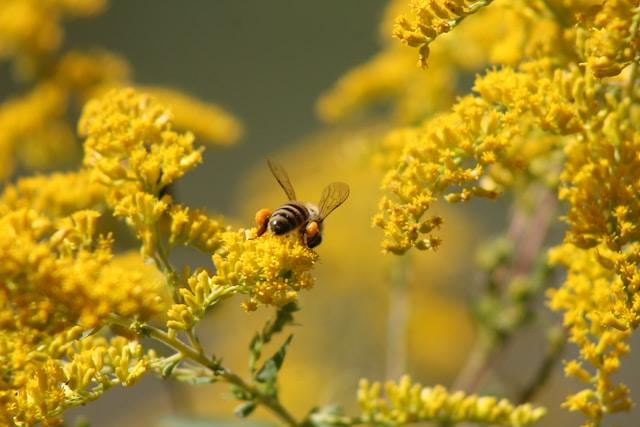As we step into our gardens in late summer and early fall, the landscape this time of year can be particularly vibrant and beautiful.
One of the most vibrant is the Ohio Goldenrod, a unique wetland plant that stands out from other goldenrods due to its preference for moist environments. This plant, with its clusters of flowers blooming from July through September on three foot stems, is an eye-catcher. Its lance shaped leaves, upwardly pointing and attractive even without flowers, add to its charm.

And for you butterfly lovers, the Ohio Goldenrod is more than just a pretty face. It’s a crucial nectar source for 18 different species of butterflies, including the monarch butterfly. Without these specific nectar sources, the survival of these butterfly species would be at risk.
The goldenrod’s pollen is primarily spread by insects, like bees and butterflies. They are attracted to the plant’s bright yellow flowers.
Goldenrod has often been blamed for causing fall allergies like hay fever, but it’s actually not the main culprit. The pollen produced by oldenrod is too heavy to be easily carried by the wind, the main method of pollen dispersal. Instead, the true culprits behind fall allergies are typically ragweed and other wind pollinated plants.
The goldenrod has a rich history. Both Native Americans and early European settlers utilized goldenrods to create a vibrant yellow dye.
Like the oxide sunflower, these plants are well adapted to the local environment and provide numerous benefits to pollinators. By planting native plants, you can support pollinators, preserve biodiversity, and create a more sustainable and resilient environment.
So next time you see a goldenrod, remember it’s not just a pretty plant, but a vital part of our ecosystem.






